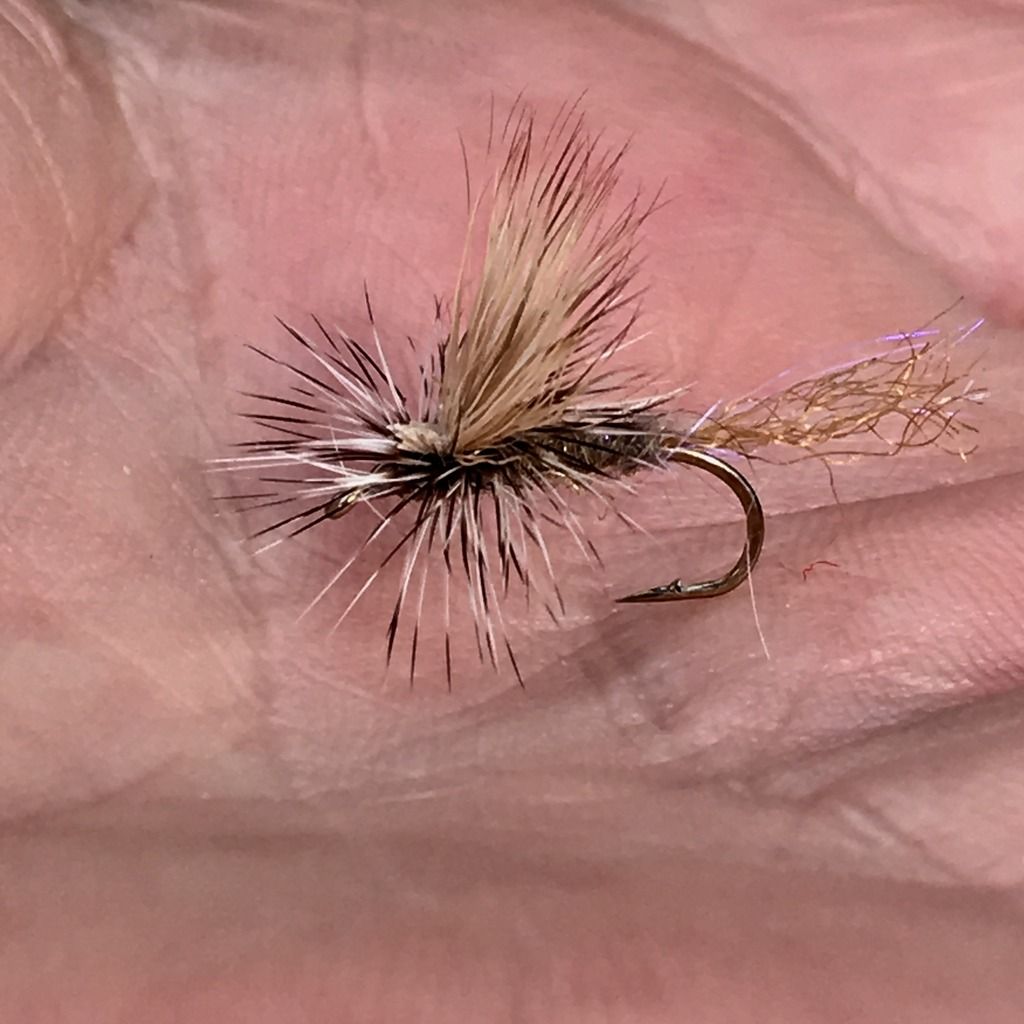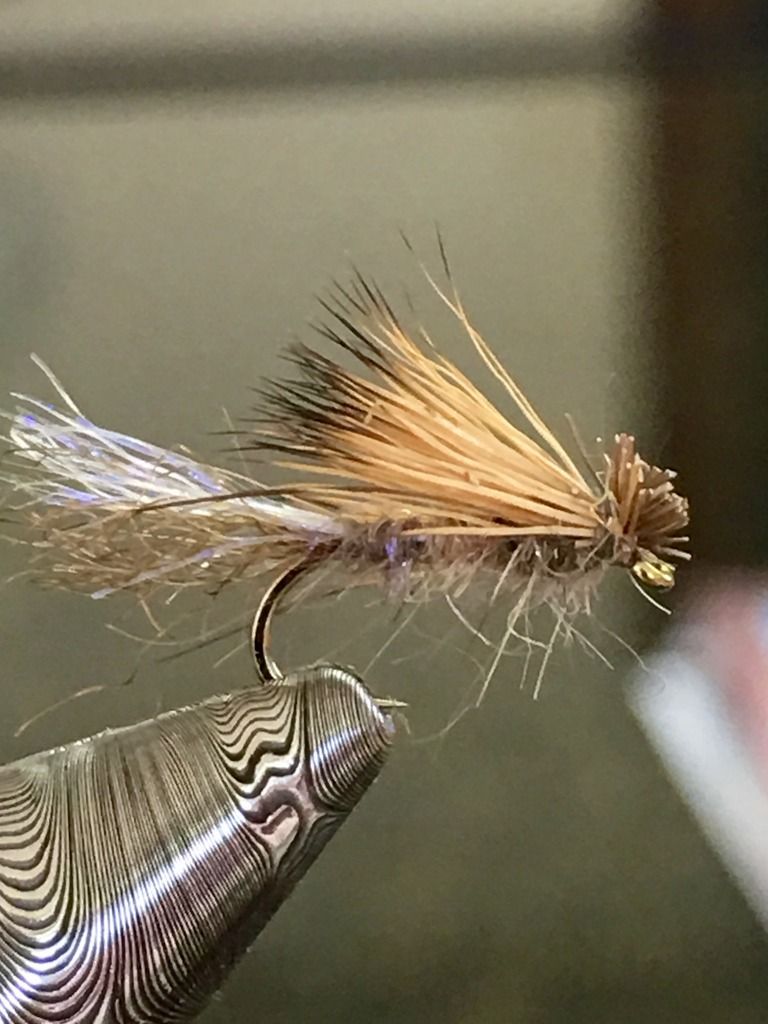I was recently touting what I consider to be the best dry fly caddis pattern I have ever fished. It is the X-Caddis series (Although I incorporate a few long UV pearl dub strands in the ones I tie).
I believe it was Whatfly who mentioned a parachute version. I assume he was referring to the E/C Caddis.
Mr. Cutter explains why he came up with this pattern. The name "E/C Caddis" refers to "Emergent/Cripple Caddis":
"From an underwater vantage using SCUBA gear I could see the palmered hackle produced a distinctly un-caddis like impression on the surface. The pattern perked upright on the water where true emerging caddis sprawled across the surface as they spread their legs out across the water trying to leverage their trapped bodies from the shuck. I changed the traditional palmered hackle to a parachute wrap around the base of the wing and it produced not only an excellent impression of the crippled caddis, but also the best pattern Ive ever come up with. Since it was published in 1981 many people have copied and changed the pattern only to come back to the original style. I continue to play with it but have yet to find a way to make it better."
This is my representation of Cutter's pattern which I have used and had success with, although, I have had better success with the X-Caddis patterns:
I think it is very interesting that neither the X-Caddis patterns have palmered hackle. Both also use a trailing shuck of Zelon (or similar "glistening" material), influenced, I am sure by Gary LaFontaine's work on Caddis flies. My version of the X-Caddis series:
Granted, this might be of no interest to some, but I do find the thinking behind popular patterns and their design thought process to be interesting.






 Reply With Quote
Reply With Quote